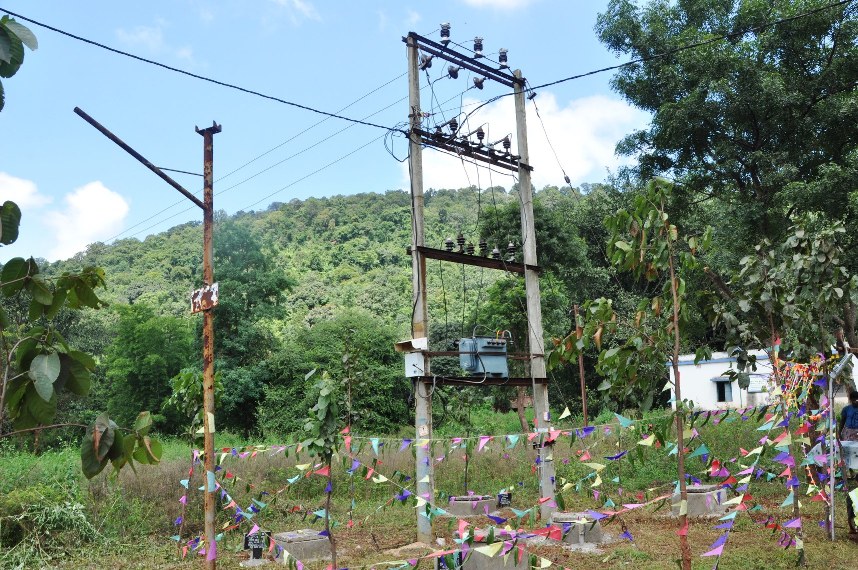Smart Power India (SPI) has released the findings of its joint study with NITI Aayog and the Rockefeller Foundation on “Electricity access and benchmarking of distribution utilities.”
The study covered 10 states, 47 districts, 115 towns and 1238 villages
The study was conducted across 10 states with a sample size of over 25,000 respondents consisting of different consumer categories such as households, agriculture, commercial enterprises and institutions both from rural and urban areas. It also captures insights from both the demand side namely the electricity customer and the supply side, which are the distribution utilities. The Access Study comes almost two years after India achieved 100 percent household electrification. The study primarily evaluates the status of electricity access in India across different states, benchmarks distribution utilities’ capacity to provide electricity access and provides recommendations to help DISCOMs realize their full potential.
The study brings out important findings on grid connectivity, electricity access, customer satisfaction and state of utility’s capacity to deliver.
Grid Connectivity
The study considered critical parameters, such as availability of infrastructure, alternative sources of lighting and electricity, and reasons for not taking connection from the electricity grid, to understand the state of electricity connectivity in India. Nearly 92 per cent of the customers reported availability of electricity infrastructure within 50 meters of their premises. However, the hook-up rate suggests that, even where electricity infrastructure is available, not all customers have a grid connection. The hook-up rate for agricultural and institutional customers is particularly low, at 70 per cent and 81 percent respectively. But the household customers enjoy a higher access at 96 per cent, partly because of the interventions made through the Saubhagya scheme.
Electricity Access
The study adapted the World Bank’s Multi-Tier Framework (MTF) for measuring energy access to the Indian context (MTF-I) to outline the overall performance on accessibility. Overall, 87 per cent of the survey respondents said that they have access to grid-based electricity. The remaining 13 per cent either use non-grid sources for electricity and lighting or do not use any electricity at all. The study further reveals that of all customers using non-grid sources, majority 62 per cent of them are agricultural customers. Only 4 percent households today do not have access to grid-based electricity.
Customer satisfaction
The study observes that a total of 66 per cent of surveyed customers are satisfied with the overall services from their utility. However, there were differences in satisfaction levels between urban customers (75 per cent) and rural customers (63 per cent). Major drivers of customer satisfaction include power reliability, power quality, the billing and collection process, and service provided by utility staff (staff behavior
Utilities’ capacity to delivery
Infrastructural capacity and, operational and institutional efficiency are key factors that determine distribution utilities’ capacity to deliver electricity access sustainably. Utilities across the 10 states were assessed on the above parameters. Utilities in Gujarat lead in capacity to deliver, with all four receiving the top four ranks among the surveyed utilities and delivering all-round performance on all three categories of capacity. Utilities across Uttar Pradesh performed far below the other utilities, with three of its five utilities ranking above 20 and UP East ranking 25.
The study observes that the overall state of electricity access is strongly correlated with the level of customer satisfaction.
Drivers of sustainability for utilities
The study observes that the overall state of electricity access is strongly correlated with the level of customer satisfaction. Utilities that perform better on access have also done better on keeping customers satisfied. The quality of power also plays an important part in customer satisfaction, as satisfied customers in this study reported fewer voltage fluctuations. The number of power cuts has a stronger correlation with customer satisfaction than prior notification of power cuts, but both are significant. The financial performance of discoms depends majorly on customer satisfaction and electricity access.
As the power sector seeks to achieve greater self-reliance and sound financial health,delivery effectiveness and customer satisfaction will play a crucial role in strengthening the overall performance of the sector. In addition, focus on areas such as quicker electricity connections, customer awareness and use of electricity subsidies, affordable tariffs structure for customers, increased customer engagement and enhanced operational efficiencies both at organizational and supply level will help the sector achieve its full potential and create a transformational impact on millions of customers.

